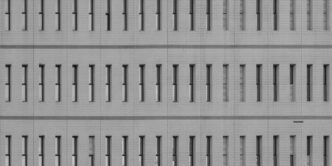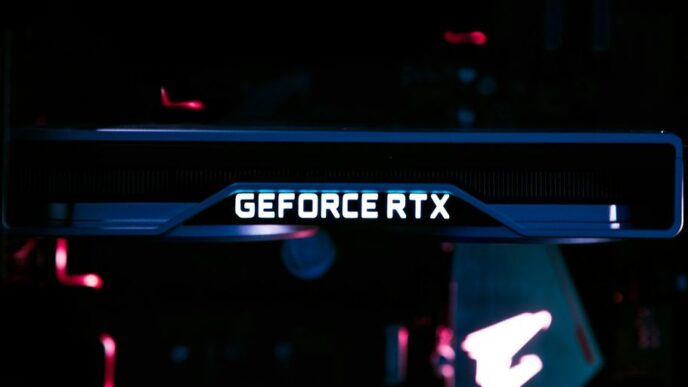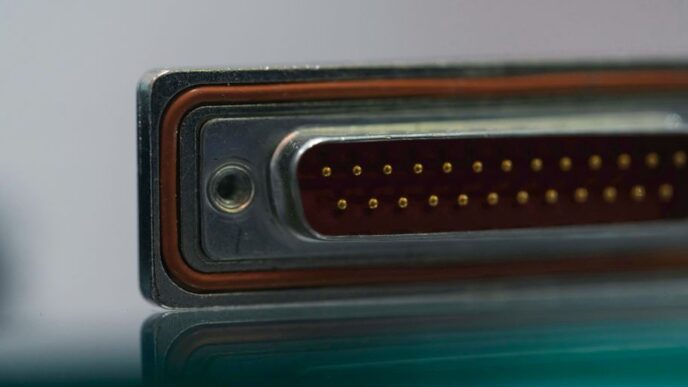The world of computer chips is always moving fast. Right now, everyone is watching what Intel and TSMC are doing with their new ways of making transistors. These tiny switches are super important for how powerful our devices are. In 2025, Intel’s 18A process and TSMC’s latest stuff will really show who’s ahead. It’s a big deal because it affects everything from our phones to big data centers. We’re going to look at what each company is bringing to the table.
Key Takeaways
- Intel’s 18A process is a big step, using new tech like RibbonFET and PowerVia to pack more transistors into a smaller space.
- There were some rumors about Intel 18A having low yields, but it looks like things are getting better, and Intel is working hard to fix any issues.
- Intel’s 18A will compete with TSMC’s N2 and Samsung’s 3nm. TSMC has good yields, and Samsung has had some problems, so Intel hopes to stand out.
- Intel has a plan for 18A, including a faster version called 18A-P, and they are also looking ahead to 14A, which will be even more advanced.
- Intel is trying to catch up in advanced packaging, which is how different parts of a chip are put together. TSMC is currently leading in this area.
Intel 18A: A Pivotal Leap in Transistor Density
Okay, so Intel’s 18A is a big deal. After some struggles, they’re aiming to get back on top of the semiconductor game. This node is supposed to be a major step forward, not just a small improvement. It’s part of their plan to launch five new process nodes in four years, which is pretty ambitious. Let’s break down what makes it so important.
The Five Nodes in Four Years Strategy
Back in 2021, Intel laid out this plan to get five new nodes out in just four years. It sounded crazy at the time, but they’re actually on track. The whole point was to catch up and then surpass the competition, like TSMC and Samsung. Intel 18A is the last step in that plan, and it’s supposed to show everyone that they’re serious about leading in semiconductor manufacturing again. It’s a pretty aggressive timeline, but if they pull it off, it’ll be a huge win for them.
RibbonFET and PowerVia Innovations
Intel 18A brings two big changes: RibbonFET and PowerVia. RibbonFET is their version of Gate-All-Around (GAA) transistors. Instead of the usual FinFET design, RibbonFET wraps the gate around the transistor channel on all sides. This gives them way better control over the current, which means better performance and less leakage. PowerVia is also interesting. It puts the power lines on the back of the wafer, separating them from the signal lines. This should improve performance per watt by about 15% and increase chip density by around 30% compared to Intel 3. These changes are what make 18A a real leap forward.
Projected Performance and Density Gains
So, what can we expect from Intel 18A? Intel says it’ll give a 30% increase in chip density and a 15% improvement in performance per watt compared to their Intel 3 node. That’s a pretty big jump. This means smaller, more powerful, and more efficient chips. The first products using 18A will be things like the Panther Lake client processor and the Clearwater Forest server CPU. If these numbers hold up, it could really shake things up in the market. We’ll have to wait and see how it performs in real-world applications, but the initial projections look promising. The Intel 18A process is expected to ramp up in 2026.
Intel 18A Yields in 2025: Unpacking the Controversy
Addressing the 10% Yield Rumor
Okay, so there’s been a lot of buzz about Intel’s 18A yields and whether they’re actually any good. The big rumor going around is that early yields were as low as 10%. I mean, yikes. That would be a problem. For context, older processes, like Intel 7, often see yields way up in the 80-90% range. But new tech is always rough at first.
Intel hasn’t exactly been shouting from the rooftops about specific numbers, which, of course, fuels the fire. But they’ve also pushed back, saying things are improving. The truth is probably somewhere in the middle. Initial yields are almost always lower, and it takes time to iron out the kinks. The semiconductor industry is always a realm of relentless innovation.
Defect Density Improvements and Milestones
So, what actually impacts yield? Well, a big one is defect density – basically, how many imperfections are popping up on the silicon wafer. The fewer defects, the more good chips you get. Intel’s been working hard on this, and they’ve hit some milestones in reducing these defects. It’s a constant battle, though. Think of it like trying to bake a perfect cake, but every now and then, you get a burnt spot. You tweak the recipe, adjust the oven, and try again.
Here’s a simplified view of how defect density impacts yield:
| Defect Density (defects/cm²) | Estimated Yield |
|---|---|
| 0.1 | 85% |
| 0.5 | 60% |
| 1.0 | 40% |
The Role of Chiplet Design in Yield Mitigation
Here’s where things get interesting. Intel isn’t just relying on improving the manufacturing process itself. They’re also using chiplet designs. Instead of making one giant chip, they’re breaking it up into smaller pieces (chiplets) and then connecting them. This has a few advantages:
- Smaller chiplets are less likely to have defects, boosting overall yield.
- They can mix and match different chiplets made on different processes.
- It allows for more flexible designs.
It’s like building with LEGOs instead of trying to carve a sculpture out of one giant block of stone. If one LEGO brick is bad, you just replace it. This chiplet design approach is a smart way to work around some of the yield challenges with cutting-edge processes like 18A.
Benchmarking Intel 18A Against TSMC N2 and Samsung 3nm
TSMC N3E Yield Dominance
TSMC’s N3E process is really something. They’re reportedly hitting yields in the 84-90% range. That’s a big deal because it means they can crank out a lot of chips that actually work. This kind of yield is why they’re so dominant in the high-performance computing and mobile chip markets. It’s tough to compete when you’re making almost every chip perfectly. This is a testament to their manufacturing prowess.
Samsung’s 3nm GAA Challenges
Samsung’s been having a tougher time with their 3nm GAA process. Rumors say their yields were below 20% for a while, which caused delays in mass production. It just goes to show that even the biggest companies face problems when they’re pushing the limits of technology. It’s a reminder that getting these advanced nodes up and running is never easy. It’s a complex process, and even small hiccups can cause big problems. The 3nm GAA process is still relatively new, so there’s plenty of room for improvement.
Intel’s Differentiators: RibbonFET and PowerVia
Intel’s hoping their RibbonFET and PowerVia technologies will give them an edge. The idea is that these innovations will lead to better power efficiency and density. But, and this is a big but, it all depends on whether they can get their yields up to a competitive level. If they can’t, then the fancy technology won’t matter much. Right now, Intel’s defect density (D0) is estimated to be between 0.2 and 0.3, which is higher than TSMC’s <0.2 for N2. They’re aiming for mass production, but they’ve got some work to do. Here’s a quick comparison:
| Feature | Intel 18A | TSMC N3E | Samsung 3nm GAA |
|---|---|---|---|
| Yield (Est.) | (Targeting Competitive) | 84-90% | <20% |
| Key Tech | RibbonFET, PowerVia | FinFET | GAA |
| Defect Density | 0.2-0.3 (Estimate) | <0.2 | Unknown |
Intel is also introducing Intel 18A-P, a performance-enhanced variant of 18A, aiming for an 8% performance boost with design rule compatibility. This is similar to TSMC’s approach of offering enhanced versions of their nodes. The mass production is planned for 2026. It’s all about getting those yields up and proving they can compete with the best.
The Road Ahead for Intel 18A: Challenges and Optimism

Okay, so where does Intel 18A stand right now, in July 2025? It’s a mixed bag, honestly. The initial panic about low yields seems to have calmed down a bit, but there’s still a long way to go. Intel’s got some serious hurdles to clear before 18A can really compete with TSMC and Samsung. But, there are also reasons to be optimistic. They’ve hit some key milestones, and their chiplet strategy could be a game-changer. Let’s break it down.
Refining Defect Density and Scaling Production
This is where the rubber meets the road. Intel can have the best transistor design in the world, but if they can’t manufacture it reliably and at scale, it doesn’t matter. The big challenge is getting that defect density down even further. Think of it like this: every tiny flaw on a chip can ruin the whole thing. And when you’re talking about billions of transistors on a single die, those flaws add up fast. Scaling production is another beast entirely. It’s not just about making a few good chips in a lab; it’s about churning out millions of them, consistently, month after month. That requires a massive investment in equipment, infrastructure, and skilled labor. And it’s something Tampere University is actively working on.
Customer Tape-Outs and Volume Ramp-Up
Customer tape-outs are a huge deal. This is when companies like Broadcom actually design chips using Intel’s 18A process. If those tape-outs go smoothly, it’s a major vote of confidence in the technology. But if there are problems, it can set things back significantly. Volume ramp-up is the next step. It’s about going from producing a small number of chips to mass production. This is where all the kinks get worked out, and where Intel really proves that 18A is ready for prime time. The ramp-up to high-volume manufacturing will really test 18A’s mettle.
Convincing Foundry Customers of 18A Readiness
Intel wants to be a major player in the foundry business, meaning they want other companies to use their fabs to manufacture chips. But to do that, they need to convince potential customers that 18A is a viable option. That means demonstrating that it’s reliable, cost-effective, and offers a performance advantage over competing technologies. It’s a tough sell, especially with TSMC already having a strong foothold in the market. Intel needs to show that their RibbonFET and PowerVia innovations are worth the risk of switching foundries. The stakes are high, as TSMC’s upcoming N2 node looms on the horizon, intensifying pressure on Intel to prove 18A’s foundry credentials.
Intel 18A-P: Performance-Enhanced Variant
So, Intel threw a curveball at their tech symposium this year – the 18A-P. Think of it as 18A, but with the volume cranked up. It’s basically a souped-up version of their 18A node, aimed squarely at customers who need that extra bit of oomph. It’s like when car companies release a "performance edition" of an existing model.
Optimized for Demanding Performance
The main goal of 18A-P is to squeeze out more performance from the base 18A tech. It’s not a complete overhaul, but rather a targeted optimization. Intel is aiming this at applications that really push the limits – think high-end CPUs, GPUs, and maybe even some specialized AI accelerators. It’s all about getting the most out of every transistor. The Intel 18A process node is a big deal for them.
Design Rule Compatibility with 18A
Here’s the clever part: 18A-P is designed to be mostly compatible with the original 18A. This means that if you’ve already designed a chip for 18A, porting it over to 18A-P should be relatively straightforward. Intel claims most of the IP can be transferred without major headaches. This is a huge advantage because it reduces development time and costs for customers. It’s similar to what TSMC does, offering enhanced versions of their nodes that are easy to adopt.
Mass Production Timeline and Performance Uplift
Intel is targeting 2026 for mass production of 18A-P. They’re promising an 8% performance improvement compared to the standard 18A. That might not sound like a massive jump, but in the world of high-performance computing, every little bit counts. Plus, it’s an 8% improvement without (hopefully) requiring a complete redesign. Here’s a quick summary:
- Mass Production: 2026
- Performance Improvement: 8% over 18A
- Design Rule Compatibility: High
- Target Applications: High-performance CPUs/GPUs, AI accelerators
It will be interesting to see how Intel’s foundry roadmap plays out.
Intel 14A: Future Horizons in Transistor Technology
Intel isn’t stopping with 18A. The company is already looking ahead to what’s next with its Intel 14A process node. It’s all about pushing the limits of what’s possible in transistor technology. Let’s take a look at what they’re planning.
Next-Generation RibbonFET and Power Delivery
Intel 14A is expected to feature the next generation of RibbonFET transistors and backside power delivery. They’re aiming to refine these technologies even further to get more performance and efficiency out of their chips. It’s like taking the best parts of 18A and making them even better.
Projected Performance and Density Improvements
Intel is projecting some pretty impressive gains with 14A. We’re talking about a potential 15-20% improvement in performance per watt, a 30% density gain, and a 25-35% reduction in power consumption compared to 18A. If they can pull that off, it would be a huge win. Lip-Bu Tan is exploring a significant shift in the company’s chip manufacturing business, potentially focusing the foundry unit on the "14A" chipmaking process.
Risk Production and Mass Production Outlook
Intel is planning for risk production of 14A in Oregon sometime in 2027. Mass production is likely to follow in 2028. It’s a long road ahead, but if they can stay on track, 14A could be a game-changer. The adoption of High-NA EUV remains uncertain.
Advanced Packaging: Intel’s Catch-Up Game
It’s no secret that Intel has been playing catch-up in the advanced packaging arena. While they’ve made strides, TSMC currently holds a significant lead, particularly with technologies like CoWoS-L and SoIC. Intel is working hard to close the gap, but it’s a tough race.
TSMC’s Lead in CoWoS-L and SoIC
TSMC’s CoWoS-L technology has become the go-to solution for high-performance computing and AI applications. Their System on Integrated Chips (SoIC) technology also offers impressive capabilities for heterogeneous integration. TSMC’s established ecosystem and proven track record give them a considerable advantage. They’ve been refining these technologies for years, building a strong foundation of expertise and customer trust.
Intel’s Foveros-B Development Timeline
Intel’s answer to these advanced packaging demands is Foveros. They’ve introduced new solutions, Foveros-B and Foveros-R, with production readiness targeted for 2027. It’s a long road, but Intel is investing heavily in this area. Here’s a quick breakdown of the Foveros flavors:
- Foveros-S: Uses a silicon interposer, currently used in PC applications.
- Foveros-R: Employs RDL (redistribution layer) as a more cost-effective solution.
- Foveros-B: Details are still emerging, but it’s expected to push the boundaries of 3D stacking even further.
Hybrid Bonding Progress and Pitch Size
Hybrid bonding is another critical area where Intel is pushing forward. Reducing the pitch size (the distance between interconnects) is key to increasing density and performance. Intel is making progress, but it’s a complex process that requires tight control over manufacturing processes. It’s all about getting those connections as small and as close together as possible. It’s a tough challenge, but it’s essential for future chip designs.
Conclusion: The Road Ahead for Transistor Density
So, what’s the takeaway here? It’s pretty clear that both Intel and TSMC are pushing hard to make transistors smaller and better. Intel’s 18A and TSMC’s N2 are big steps, bringing new tech like RibbonFET and backside power. It’s not just about how many transistors you can fit, but how well they work and how much power they use. Both companies have their own ways of doing things, and it’s a tough race. We’ll have to wait and see how things play out in 2025 and beyond. It’s going to be interesting to watch who comes out on top in this ongoing tech battle.
Frequently Asked Questions
What is Intel 18A?
Intel 18A is a new way to make computer chips that uses special new tech called RibbonFET and PowerVia. It’s supposed to make chips much smaller and faster than before. Intel hopes it will help them catch up to other big chip makers like TSMC.
What are RibbonFET and PowerVia?
RibbonFET is Intel’s version of a new transistor design called Gate-All-Around (GAA). Think of it like wrapping the control part of the tiny switch (the gate) all the way around the wire (the channel). This makes the switch work better and saves power. PowerVia is a way to deliver power to the chip from the back, which helps make the chip smaller and more efficient.
What’s the deal with the 10% yield rumor for Intel 18A?
Yield refers to how many good chips come out of a batch. A rumor said Intel’s 18A chips only had a 10% yield, meaning only 1 out of 10 chips worked. Intel says this isn’t true for the whole process and that their defect rates are getting much better, meaning more chips are working correctly.
How does Intel 18A compare to chips from TSMC and Samsung?
Intel 18A is going up against TSMC’s N2 (their 2-nanometer chip) and Samsung’s 3nm chips. TSMC is known for making lots of good chips (high yields), and Samsung has had some trouble with their 3nm chips. Intel hopes its special RibbonFET and PowerVia tech will give it an edge.
What is Intel 18A-P?
Intel 18A-P is like a souped-up version of the regular 18A. It’s designed for customers who need even more power and speed from their chips. It uses the same basic design as 18A, so it’s easy for chip designers to switch to it for better performance.
What is Intel doing in advanced chip packaging?
Intel is working on catching up in advanced packaging, which is how different parts of a chip are put together. Companies like TSMC are ahead in this area with technologies like CoWoS-L and SoIC. Intel is developing its own packaging tech like Foveros-B and improving how different chip parts are connected to make them work better together.














